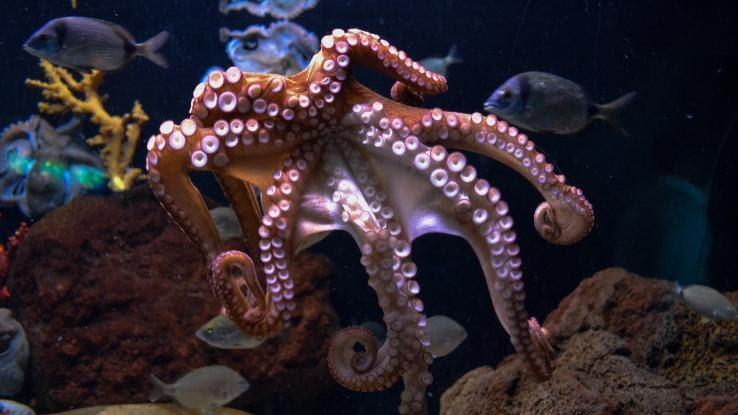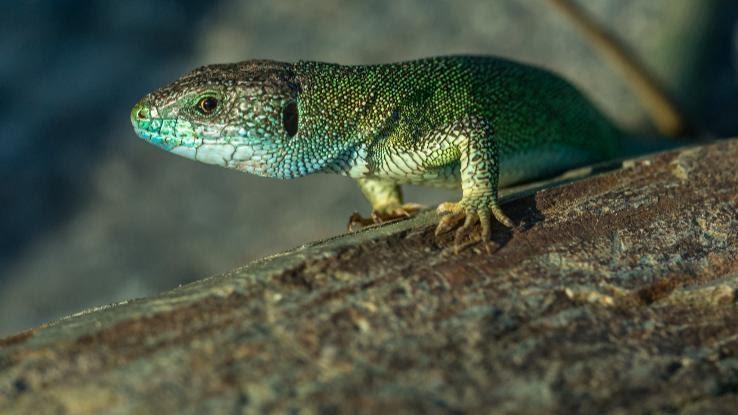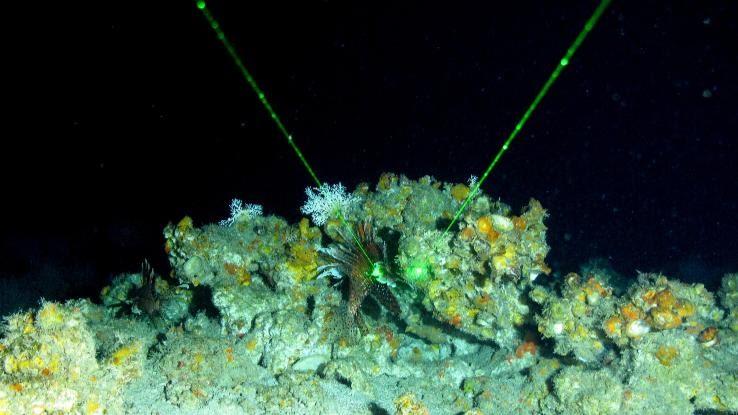Surprising Facts That Will Change How You Look at Science

From physics to psychology to botany, science tries to explain every part of reality. While high school science classes may not have been your cup of tea, that doesn’t mean science itself is boring — far from it. Here are some incredible facts that show just how amazing the subject area truly is.
Octopus Intelligence
You might not expect a creature with no backbone and a lifespan of only a few years or even months to be very smart, but you’d be wrong. Octopuses use tools in the wild and captivity, recognize themselves in mirrors, perform daring escapes from aquarium tanks and even demonstrate unique personalities.

In one experiment, three octopuses were faced with a system of levers they could use to obtain food. Two of them did this. The third, however, destroyed the lever system and squirted ink at the experimenter. It seems as though that one wasn’t happy to be part of the experiment.
Ghost Planets Are a Thing
The whole “is Pluto a planet” debate is nothing compared to speculation that there may be an unknown planet in the solar system — and it’s believed to be about 10 times the size of Earth. The ghost planet, dubbed Planet Nine, has been the object of a search since 2016.

The existence of Planet Nine was theorized when astronomers noticed a little rock orbiting the sun differently than the rest of the planets in the solar system. Their conclusion was that a much larger object had to be responsible for its pull.
Lizard Blood as a Malaria Cure
Blood doesn’t seem like an obvious cure for disease, but when it comes to certain types of blood, it may be just that. The prasinohaema, a lizard found in New Guinea, has blood with a very high concentration of green bile pigment, more than any other animal, and scientists think it could have medical uses.

That’s because the pigment is a serious antioxidant. Further studies suggest that it could even help humans cure malaria, as the pigment in their blood is highly toxic to malaria parasites.
Ants Have Built-in Compasses
Ants are impressive for many reasons, including their super strength, ability to communicate with pheromones and impressive building abilities. However, nothing compares to how some of them use the very planet itself to survive and thrive.

Desert ants are able to sense the natural magnetic field created by the Earth and use it as a sort of compass to help them navigate above ground. This can be particularly useful when they’re far from the colony while scavenging for food.
Giant Sloths Existed
Sloths spend much of their lives relaxing, sleeping or eating, and almost all while hanging around in trees. They’re lazy and adorable. However, a few thousand years ago, there was a sloth relative in the Americas with a very different approach to life.

Fossil evidence suggests that the extinct Pleistocene ground sloth was a huge beast. Unlike today’s sloths, it stayed on the ground while eating leaves from trees. However, their posture was similar to today’s sloths, meaning they were fairly slow. Combined with a lack of fear for early humans, they soon proved to make easy meals for Stone Age hunters.
Plants Are a Chatty Bunch
Plants may seem like they live lonely, isolated lives with no way to communicate with others of their kind. However, that couldn’t be further from the truth. In fact, plants speak to each other all the time.

Okay, so they don’t speak English, but they can release chemicals through both their roots and the air to send a message to other plants in their vicinity. These messages are designed to let them know about threats in the area such as insects or diseases.
Another Blood Cure
It’s not just lizard blood that could harbor a cure to many of the ailments and diseases that plague humanity. Other animals on the planet can actually create and produce certain antibodies that humans can’t, which leads to their blood being pretty valuable in the medical sense.

Sharks and camels specifically have antibodies that are smaller than humans’ and thus are able to flow through the body more easily. Research on them could lead to a new lease on life for cancer patients: so-called nanobodies have the ability to label certain cancers for earlier detection.
Head Transplants Aren’t Just Sci-Fi
When you think of a head transplant, you might automatically picture a deranged evil scientist laughing over a patient on a steel slab with electricity going haywire all around them, but they may be possible in the near future.

Two Chinese surgeons have started to create a way to take a perfectly working human head and transfer it to another body that suffers from spinal cord injuries or paralysis. The most interesting part is that they’ve actually been able to do it successfully on mice, rats and small dogs.
Dinner Time Used to Be Really Different
Modern dinner tables are generally full of typical staples such as steak, chicken, veggies. While insects may also be on the menu in some countries, for many people, eating bugs is absolutely off-limits.

It wasn’t always that way, though. A genetic study performed on a range of mammals found that humans have many of the genomes necessary to make insects readily digestible, which suggests that our ancestors may have been digging into grubs as much as Timone and Pumbaa were in The Lion King.
Different Blood Types Have a Huge Impact
There are four main blood types — A, B, AB and O — and every person on the planet fits into one of them. Your type is determined by proteins on your red blood cells called antigens, and each type is further divided into positive and negative variations based on whether your blood has Rhesus antigens.

While blood type is important to know if you ever get a blood transfusion, it also determines how susceptible you are to certain illnesses. People with Type O blood, for instance, are more prone to skin cancer but less likely to get heart disease and dementia
Life Might Exist in the Solar System Outside Earth
A lot of people think that the only planet in the solar system that can harbor life is Earth. However, there are other places in our corner of the cosmic woods that might have the ingredients necessary to sustain life, if only in microscopic form.

Mars receives the most media attention as a potential cradle of life in the solar system because of its underground water and formerly rich atmosphere, but it’s not the only candidate. Jupiter’s moon Europa and Saturn’s moons Titan and Enceladus also may be in the running. And while Venus’s surface is too hot for life, microscopic life may exist some thirty miles up into the planet’s atmosphere.
Memories Aren’t Always Real
Are your memories actually your own? That depends, really. A team of scientists managed to transfer genetic information from snail to snail, making one have memories that it actually hadn’t experienced. This transplantation of memories was done by messing with the RNA in their bodies.

Although it might sound terrifying to be subject to this memory infiltration, it’s actually being used for a good thing: the researchers believe that it could successfully help people suffering from Alzheimer’s disease by alleviating their cognitive symptoms and helping them to keep their memories.
Drugs Are Little Hitchhikers
If Nancy Reagan is to be believed, all you need to do is just say no to drugs. Seems simple, right? Well, it turns out that drugs might me more mobile than you would think.

According to one study, illegal substances and other illicit drugs can actually hitchhike their way onto the hands and bodies of people who haven’t had any direct contact with them at all. They ride along on bills, tables, and other surfaces and set up shop on your body. However, in such small quantities, they can’t do much.
Disease Cures
The common cold lives up to its name by being found everywhere. The viruses that cause it are found everywhere, and for most of human history, colds were just a part of life. However, that may now be changing.

Rhinovirus, one source of the common cold, may now be forced to meet its match due to a new discovery. Scientists have found a compound that targets virus proteins and stops them from being able to replicate in human cells, essentially stopping it in its tracks. The new finding could potentially lead to other medical advancements as well.
Dinosaurs Were Tough Eggs to Crack
You probably know dinosaurs laid eggs, but have you ever wondered how they managed to keep them warm without squishing them? Tyrannosaurus Rex was not a dainty creature, so it’s hard to imagine how they avoided turning their future young into scrambled eggs.

In the case of large dinosaurs, their eggs must have been impressively large, too. However, it wasn’t the size or even toughness of dinosaur eggs that kept them safe, but how they were laid.. Large dinosaurs set their eggs up in a circular ring around the nest to make sure that when they were keeping them warm, they weren’t accidentally crushing them.
Invisible Polar Bears
Infrared cameras are designed to capture heat from objects to create an image of where something is. The hotter something is, the more visible it becomes on the infrared imagery. You’d think that would mean that such cameras could detect any creature, but the polar bear can be nearly invisible on them.

It might be assumed that it’s because they live in cold climates, but this effect actually happens because of the bears’ ability to trap heat. Their fur and blubber keep the heat in, meaning little to no heat escapes for the cameras to detect.
Your Genes Don’t Die When You Do
We think of death as being the end of the body. Everything shuts down, and that’s it — game over. While that’s largely true, it isn’t completely, and the exceptions are fascinating.

New findings suggest that a small number genes in the body stay turned on even after death. The research could help medical professionals in keeping organs preserved after death and could also lead to better ways to figure out the cause of death in murder victims.
The Length of the Milky Way
Traveling all the way across the Milky Way is clearly science fiction, but you can be forgiven for hoping that some of our descendants might be able to pull it off someday. Who doesn’t want to imagine a whole galaxy waiting to be explored?

The thing is, no matter how big you think the galaxy is, it’s probably still bigger. Some recent estimates peg it at around 200,000 light-years in diameter. The speed of light is 299,792,458 miles per hour, so that’s around 59,958,491,600,000 miles across. Imagine racking up that many miles on your car.
A Star Is Born
By some estimates, there are around 9,096 stars visible to the naked eye in the night sky and 250 billion in the Milky Way — give or take 150 billion. You likely know that stars are enormous balls of gas and plasma, but have you ever wondered where they came from?

Stars come from nebulas, vast clouds of cold gas many light years in diameter. Over time, the gravity of these clouds causes them to gather inward and form clumps. The clumps become denser and hotter over time — so dense and hot that a nuclear reaction begins. At around 10 million degrees Celsius, the clump becomes a new star.
Boiling and Freezing at the Same Time
We normally think of freezing and boiling as mutually exclusive states, and in most cases, they are. With sufficient heat and pressure, matter turns to liquid or gas, while in the absence of those things, gases condense and liquids freeze. However, it’s not always so simple.

While we often think of substances as having set temperatures when they change form, pressure changes that temperature. And if you can adjust the temperature and pressure to just the right point, a process called the “triple point” happens when all three states of matter exist within a substance at the same time. It doesn’t usually occur in nature, but it makes for a neat science experiment.
Rock Beats Scissors, Water Beats Laser
If you watch movies like Star Wars or even Austin Powers, you may think that lasers are powerful, and to be fair, they certainly are. After all, we use them for everything from DVD players and surgery to rifle sights and naval weapons platforms. But did you know they can be trapped in water?

Under the right conditions, a form of total internal reflection can happen where the photons of the laser move through the water but end up bouncing around inside it instead of continuing to move in a straight line. This ability to “bend” light is also behind the fiber optic cables we use for the internet.
The Existence of Black Holes
One of the biggest mysteries in astronomy is the existence of black holes. Formed by the collapse of stars, these super massive stellar objects pull in everything around them with their powerful gravity, even light.

While you’d be crushed to death by a black hole’s gravity long before you reached its center, scientists don’t know what would happen if you actually made it there. The gravity of black holes is so intense that it fundamentally alters space and time around it, making these stellar bodies some of the greatest mysteries in the universe.
Cats Always Land on Their Feet
For many people, cats are such an ordinary part of life that they don’t warrant much thought. However, cats are physical and biological miracles in their own way. While it’s not true that a cat always lands on its feet, it will far more often than not, and the reason is surprising.

In addition to muscular legs that absorb shock and an unusually flexible skeleton, cats can also right themselves midair by arching their backs, and the higher up a cat is, the more time they have to right themselves with this method. That said, don’t test their abilities: cats can make mistakes, and overweight cats have extra difficulty righting themselves.
Your DNA Can Reach Space
The human genome has 23 chromosome pairs stored in the nucleus of each cell. While DNA naturally has a spiral shape, it’s further twisted by enzymes that make it able to fit into such tiny spaces.

So how long would your DNA be if it wasn’t coiled like that? If you stretched out all the DNA in a single cell and put the strands end to end, they would come out to about two meters in length. If you did that to all 37 trillion cells in your body, they would be twice as long as the entire solar system.
The Sheer Amount of Atoms
Atoms are everything–literally. They make up every solid, liquid and gas as well as more exotic states of matter like plasma and form the basic building blocks of nearly everything we interact with in our daily lives

The typical human is composed of around around seven billion billion billion atoms, and no, that’s not a typo. That’s just how many atoms are in the human body. When looking at it on a universal scale, the number of atoms in the known universe is basically uncountable, and that’s pretty wild.
You’ve Probably Walked Around the World
With the invention of computers and other conveniences that have gotten us off our feet, much of the Western world has adopted a more sedentary lifestyle. However, assuming a person lives to the ripe old age of 80, they will on average have walked around 216 million steps over the course of their lifetime.

In other words, they’ll have walked 110,000 miles.That’s about five times the distance around the Earth. If you’re 40, that means you’re halfway through your third pass, and if you’re 20, you’re about a quarter of the way through your second.
Helium Defies Gravity
Helium is commonly known as the gas that can make balloons stay afloat for an entire birthday party — and the one that makes your voice sound funny. However, it can be just as fun to play with in liquid form. (Although unless you’re a scientist, you really shouldn’t.)

In liquid form, if helium is brought to just below -452° Fahrenheit, it becomes a superfluid that defies expectations. It can climb up over the sides of the dish it’s in and even resist movement when it’s being spun in circles. That’s because it becomes a superfluid, a liquid that doesn’t experience friction.
Blood Cells Move Fast
Your body is full of blood — about 5-6 quarts on average, to be exact. In a healthy person, the heart also beats around 70 times a minute, pumping out almost 2.5 ounces of blood every single time it beats. It’s always working to get blood circulating around the body.

Because of that, the heart pumps out almost the entire body’s store of blood every single minute. A single blood cell travels around the entire body in that time, and that’s a pretty impressive speed record for something so tiny.
Your Brain Never Stops Working For You
As you climb into bed each night, you may feel like your body is shutting down. Our bodies become sluggish, and thoughts and concentration become more difficult to maintain. However, the brain doesn’t quit working once the lights go out.

While scientists don’t fully understand how sleep works, they do know that the brain does a lot of heavy lifting during that time. Not only does the brain likely process and store information gained during the waking hours, but it also purges itself of toxins. Sleep — and the lack thereof — is even tied to whether or not people develop dementia and other memory problems later in life.
Flamingos Aren’t Actually Pink
The beautiful pink feathers of the majestic flamingo are certainly something to marvel at, but they’re not born with that wonderful pink hue. In fact, their feathers are actually more of a grey-white color when they first hatch.

They end up pink in the wild because of what they eat. Their diet is rich in brine shrimp and blue-green algae, both of which are rich in a substance called canthaxanthin. It’s this chemical that gives flamingos’ feathers their hue — and, incidentally, some sausages.





